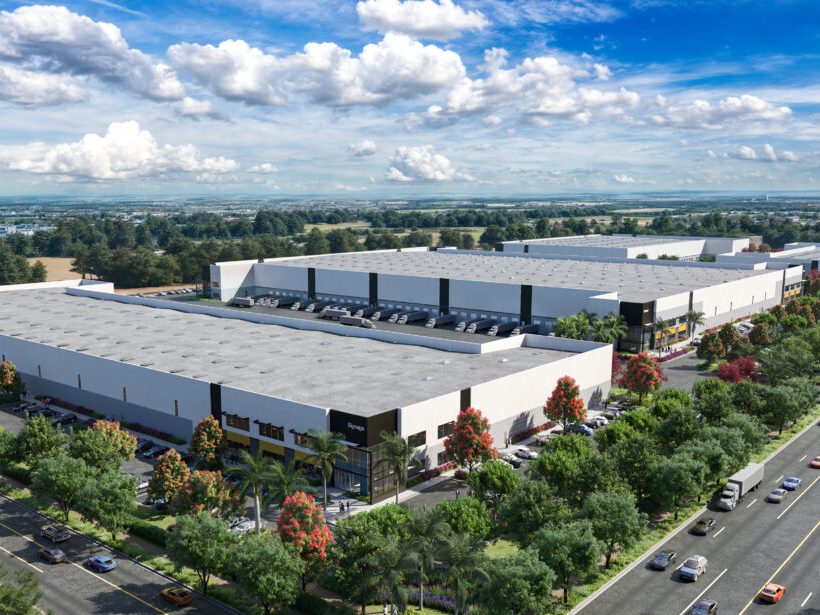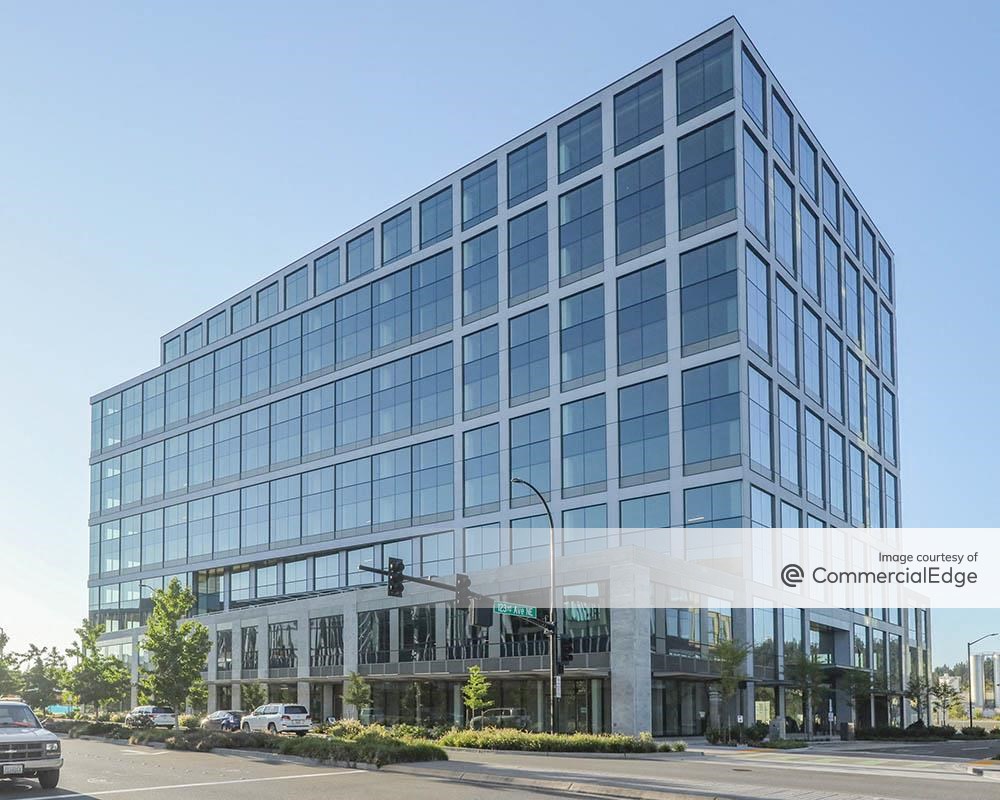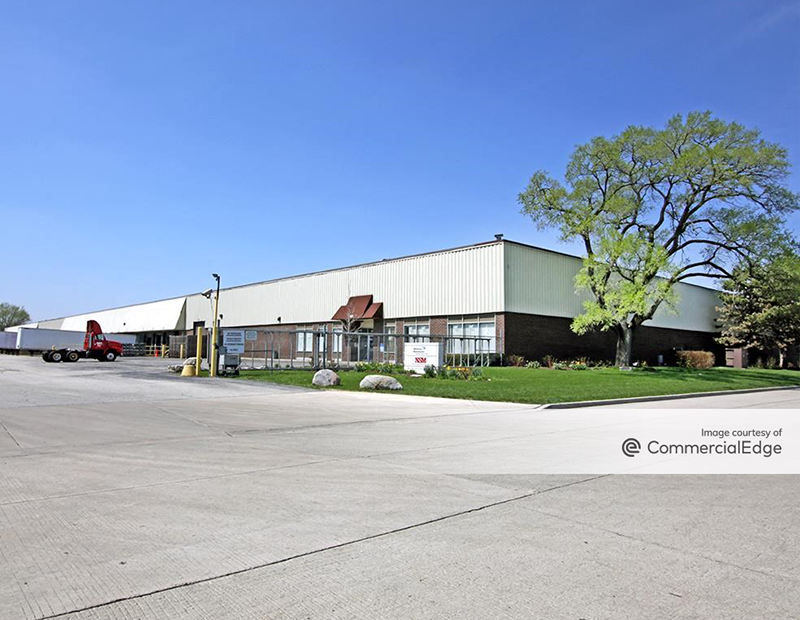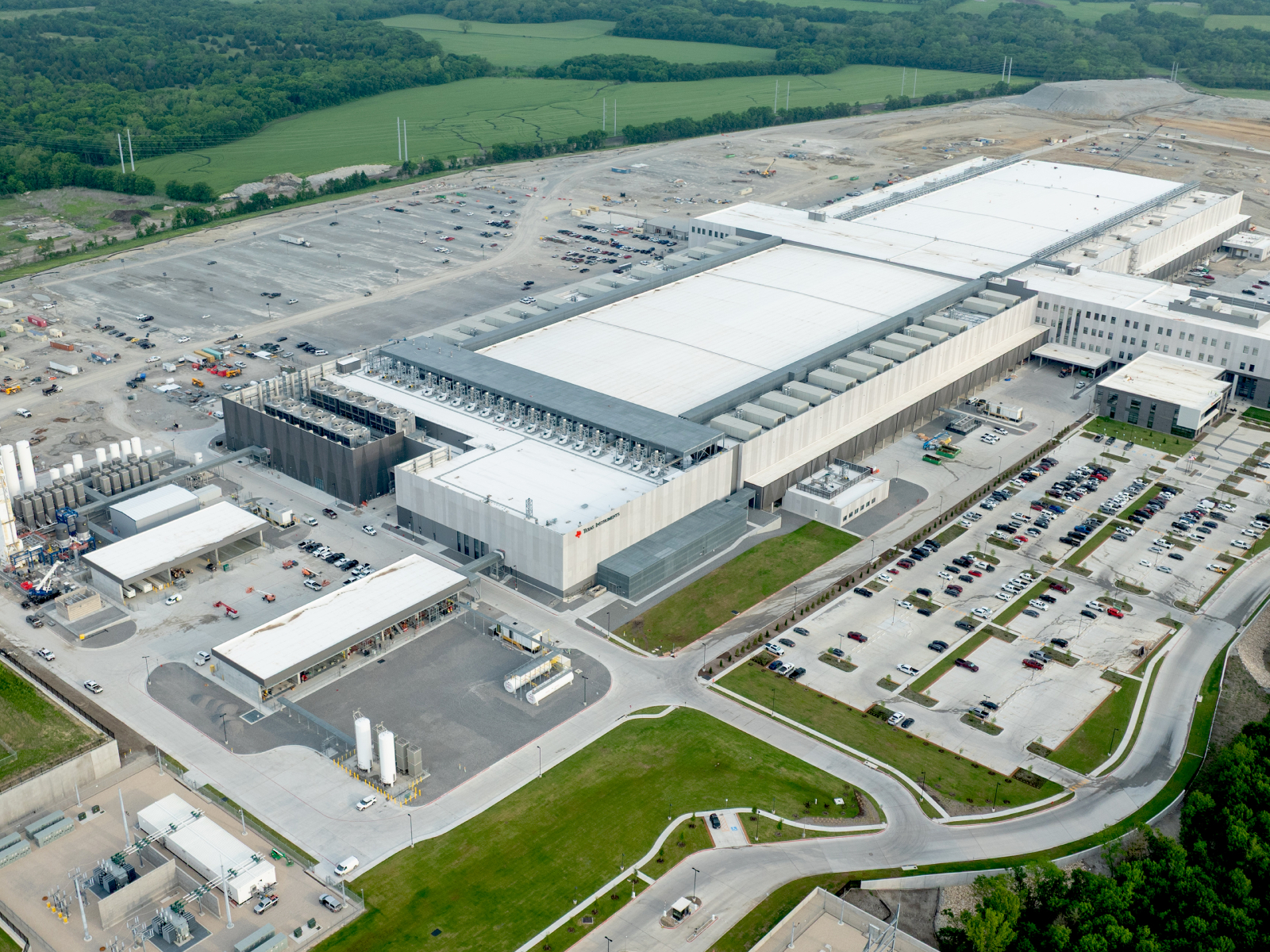A Private Lender’s Perspective on CRE Finance
BridgeInvest’s Alex Horn shares insights into non-bank debt sources, CMBS market prospects and more.
With no end in sight for high interest rates, investors from all corners of the real estate industry are turning to private lending to get deals done. Alex Horn, managing partner & founder at private lender BridgeInvest, talked to Commercial Property Executive about a financing climate that enabled the company’s H1 2023 volume to surpass the total volume of deals reviewed in all of 2022.
The Fed’s benchmark rate is the highest in 22 years and Chairman Powell indicated other increases are likely by the end of the year. What does this mean for the CRE landscape?
Horn: After inflation spiked in December 2021, driven primarily by supply-side disruptions resulting from the COVID-19 pandemic, the Federal Reserve started raising interest rates to bring inflation down to its 2 percent target. Although inflation has significantly declined since peaking at 9.1 percent in June 2022, there is a real concern that there is still too much demand in the economy that could make the easing in inflation temporary, and that supports the argument that the Fed will need to keep rates higher for longer, with the Forward 1-month SOFR Curve increasing by approximately 175 basis points between March 31 and Aug. 31. The current expectation, according to the Fed’s dot plot, is that rates will peak around 4.6 percent at the end of 2023, before falling to 3.4 percent, 2.5 percent and 2.5 percent at the end of 2024, 2025 and 2026, respectively. Contrary to the Fed, the market is currently pricing in the expectation that the 1-month SOFR will decrease to around 3.4 percent by the end of 2026, according to Chatham Financial Term SOFR forward curves.
The quick and consecutive interest rate hikes over the last year had a significant effect on the CRE market, greatly affecting property values and reducing the volume of transactions. As of the second quarter of 2023, transaction volumes were down approximately 64 percent year-over-year, and 50 percent for the trailing four quarters, as shown by CBRE data. With the lower transaction volumes, we have seen property values drop across the board, with the July 2023 Green Street Commercial Property Index showing property values are down approximately 16 percent since the peak of March 2022, and approximately 12 percent year-over-year, compared to approximately 37 percent during the Great Financial Crisis.
READ ALSO: Charting CRE’s New Capital Markets Landscape: Q&A
However, commercial real estate values appear to be leveling out, and the higher-rate environment has created a highly attractive scenario for private CRE lenders. First, as private lenders typically structure floating-rate debt with high short-term interest rate floors, lenders can “grandfather” higher rates throughout the term of the loan. Second, even if short-term rates start to stabilize or even fall, lenders will get an additional margin of safety for their loans through borrower refinanceability and increased property values due to a reduction in cap rates.
What is CRE borrowers’ preferred financing method right now?
Horn: CRE borrowers have traditionally had access to a wide range of capital sources to finance their projects, but bank financing has historically been the preferred option. However, given the increased pressure on banks following the events of March 2023, origination volume has significantly decreased (down 48 percent year-over-year in the first half of the year, according to Newmark’s Second Quarter 2023 Capital Markets Report) while underwriting standards have tightened. The decrease in bank capital availability has allowed BridgeInvest and other private lenders to step up and act as liquidity providers at a time when borrowers value certainty and speed of execution more than ever. BridgeInvest has already seen a significant increase in the volume of deals, having reviewed over $21.3 billion in potential loan opportunities in the first half of 2023, already surpassing the volume of deals reviewed in all of 2022.
Approximately one-third of all CRE loans are fixed-rate loans, and these have traditionally been originated by banks and CMBS. Considering origination volume for both banks and CMBS decreased by 48 percent and 79 percent year-over-year in the first half of 2023, the availability of fixed-rate loans has become increasingly constrained. Although interest rates are expected to remain elevated in the short term as the Fed continues its battle against inflation, we expect borrowers will lean towards floating-rate debt to capitalize on lower interest rates without the need to refinance their existing loans.
CMBS delinquencies in recent months are increasing, Which property types and regions do you see the biggest increases coming from?
Horn: According to Trepp’s August Delinquency report, the overall U.S. CMBS delinquency rate increased by 127 basis points year-over-year and 113 basis points compared to six months ago. Although it is hard to estimate how high delinquency rates can go, we might be at the start of a reversal of the trend as the rate fell by 16 basis points to 4.25 percent in August. While it might be too soon to be certain that the reversal will stick, current delinquency rates are significantly lower than the all-time high of 10.34 percent in July 2012 and the COVID-19 high of 10.32 percent registered in June 2020.
While the overall rate decreased, the rate inched up for four of the major CRE property types: industrial, multifamily and retail properties saw small increases in the delinquency rate ranging between one and three basis points compared to the previous month to 0.33 percent, 1.84 percent and 6.87 percent, respectively. Meanwhile, office saw the largest increase at 11 basis points to 5.07 percent, while lodging was the main driver of the decrease in the overall delinquency rate, decreasing by 54 basis points to 5.31 percent.
Office is the asset type that will likely continue to see the biggest increases in delinquency rates. Before the pandemic, average office occupancy already hovered around the low-80 percent range for most markets. The pandemic work-from-home culture, coupled with the low unemployment rate in the U.S. has made it difficult for employers to force employees back into the office without running the risk of losing them. We believe that over the next few years, we will experience supply destruction in the sector either through conversion to other uses or just full demolition until the market reaches equilibrium.
In terms of regions, we are seeing a strong preference for fast-growing secondary markets, particularly in the Sun Belt, including Austin, Dallas, Miami, Atlanta, Charlotte, Raleigh-Durham and Nashville. Major metropolitan areas are being hit hard by economic downturns, with San Francisco and Chicago at the top of the list. The Bay Area’s historic office vacancies, coupled with housing unaffordability, and rising crime and homelessness rates, which have driven residents to move away from the city, have driven property values down with no clear end for these problems. Chicago’s overall difficult business environment has driven large companies to relocate their headquarters away from the state at the same as crime is scaring away residents, leading to increased vacancy rates and decreased property values.
READ ALSO: Amid CRE Default Concerns, Bank Capital Rules to Change
Do you see any systemic problems in the banking industry as a result?
Horn: CRE loans account for approximately 29 percent of small banks’ assets, and small banks hold 4.4 times more exposure to CRE loans than their larger peers, according to J.P. Morgan. Although the CRE industry is certainly facing some challenges, these widely vary across sectors. Office is facing its own set of challenges, with vacancy rates continuing to rise since they first soared during the pandemic given the increasing popularity of remote work. However, even within the office sector, performance varies widely depending on geography, with cities like San Francisco and Chicago facing much bigger challenges than other cities, as mentioned above. At the same time, the multifamily, industrial and retail sectors are experiencing much stronger fundamentals given a shortage of 4 million to 5 million housing units, asking rent growth, a change in consumer habits, shoring and nearshoring trends, and the popularity of neighborhood retail centers to name a few.
This is to say that while there certainly are concerns about the CRE industry there are still pockets within the industry that are performing well, and the stress within the banking industry will largely depend on the makeup of the underlying CRE portfolios.
It is also important to note that the banking liquidity crisis of March 2023 will likely result in increased regulations for banks. This is not something new, as we have seen before that financial regulation is highly cyclical, where crashes and liquidity crises bring calls for increased regulations, while prolonged periods of stable and uneventful growth bring calls for reduced regulations. The largest banks in the U.S. that remained subject to the full suite of bank regulations per the Dodd-Frank Act were not only able to withstand the market shocks of the recent banking crisis but were net winners as recipients of billions in new deposits. As a result, we believe small- and medium-sized banks will be subject to increased regulation in a move to reinstate trust in the financial system, which will likely lead to even less capital available for CRE in the short-to-medium term.
Bucking a historical trend, some large borrowers are handing back the keys on properties they don’t really want to keep. How will this strategy pan out for lenders in the long run?
Horn: While higher interest rates have allowed lenders to lock in higher interest rate floors throughout the term of the loan, the current environment, which continues to be highly volatile and uncertain, will not come without its challenges, as borrowers’ balance sheets become stressed and once generous profit margins for real estate owners come back down to earth. We believe that lenders who possess considerable experience, along with a dedicated team of experts who are highly proficient in loan workouts, will be in an advantageous position to seize market opportunities, as distressed loans will likely become a more prominent feature of CRE capital markets over the foreseeable future.
Can/should we expect changes in GSE lending given the current disastrous state of financing?
Horn: The slowdown in bank CRE debt originations comes at a time when the market is set to absorb $1.9 trillion in debt maturities between 2023 and 2025 with significantly higher costs than when the loans originated. Considering CMBS issuance is still down 59 percent year-over-year, and debt funds don’t have enough dry powder to fill the void by themselves, the GSEs, in keeping with their mission of maintaining liquidity in the market, will likely have to carry a heavier load.
LIBOR expired in June. How smoothly has the market transitioned from pricing based on SOFR and how have lenders approached the conversion of legacy LIBOR loans?
Horn: Although LIBOR ceased to be published by ICE on June 30, 2023, U.S. CRE lenders began adopting SOFR and other LIBOR alternatives back in late 2021. The beginning of the transition happened slowly, as lenders dealt with overall market volatility and low industry staffing levels at the same time as CRE transactions surged as the U.S. economy was emerging from a pandemic-induced recession. Since then, most lenders have incorporated fallback language into legacy LIBOR, which contemplates the transition away from LIBOR and provides a framework for replacing LIBOR with an alternative rate. In any case, the amount of loans still tied to LIBOR after June 30 is unlikely to cause market disruption, given the majority of the loans that do not have fallback language are covered by the Adjustable Interest Rate (LIBOR) Act, which provides that LIBOR in such loans with SOFR (including a “spread adjustment”), resulting in what we believe to be a smooth transition following the discontinuation of the rate.
How much has the cost of interest rate caps increased since the Fed started raising the interest rates?
Horn: The Fed’s interest rate hiking cycle, which has in turn led to dramatic changes in base rates such as SOFR, has caused a two-year cap on a $25 million loan at a 4 percent strike rate to rise from $97,000 in March 2022 to $552,000 today, according to Chatham Financial data. Although interest rate cap prices vary significantly depending on the value, term and strike rate of the cap, interest rate cap prices across the board are significantly higher today than they were in early 2022.
This large jump in prices has pushed borrowers to consider alternative options such as selling their properties or refinancing their loans at a higher fixed rate. Aware of the increased pressure borrowers face having to renew interest rate caps at prohibitively high prices to meet lenders’ requirements, BridgeInvest does not include interest rate caps as a requirement for loans, and instead finds creative solutions tailored to each individual investment.
How can investors make safe investments in this uncertain environment?
Horn: A typical capital stack for a CRE loan consists of an equity position (typically between 25 percent to 35 percent), a mezzanine loan (typically around 10 percent) and a senior secured loan (typically between 55 percent and 75 percent). The equity position, although traditionally associated with the highest returns, is in the first loss position should the value of the property decrease, followed by the mezzanine loan, and finally the senior secured loan. As distressed loans are expected to become a more prominent feature of the CRE markets over the foreseeable future, we see an investor’s position in the capital stack, combined with a conservative loan-to-value ratio, as one of the key drivers for generating risk-adjusted returns.
That is why BridgeInvest focuses exclusively on originating floating-rate, senior secured CRE loans, as they position investors in what we believe to be the best position to take advantage of the higher rate environment—which has increased returns over the last 12 months—while also preserving capital in the face of heightened market volatility and uncertainty.








You must be logged in to post a comment.